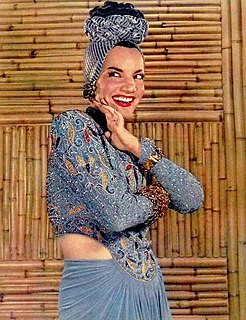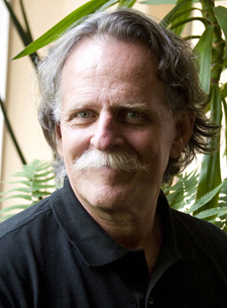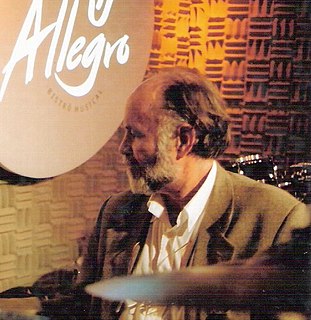
Carmen Miranda, was a Portuguese-born Brazilian samba singer, dancer, Broadway actress and film star who was active from the late 1920s onwards. Nicknamed "The Brazilian Bombshell", Miranda was known for her signature fruit hat outfit that she wore in her American films. As a young woman, she designed hats in a boutique before making her first recordings with composer Josué de Barros in 1929. Miranda's 1930 recording of "Taí ", written by Joubert de Carvalho, catapulted her to stardom in Brazil as the foremost interpreter of samba.
Botafogo is a beachfront neighborhood (bairro) in Rio de Janeiro, Brazil. It is a mostly upper middle class and small commerce community, and is located between the hills of Mundo Novo, Dona Marta and São João. The word Botafogo also refers to a Latin American ballroom dance move, named so because the area of Botafogo is where it originated.

The National Museum of Brazil was Brazil's oldest scientific institution. It is located in the city of Rio de Janeiro, where it is installed in the Paço de São Cristóvão, which is inside the Quinta da Boa Vista. The main building was originally the residence of the Portuguese Royal Family between 1808 and 1821 and was later used to house the Brazilian Imperial Family between 1822 and 1889. After the monarchy was deposed, it hosted the Republican Constituent Assembly from 1889 to 1891 before being assigned to the use of the museum in 1892. The building was listed as Brazilian National Heritage in 1938 and was largely destroyed by a fire in 2018.

Claudio Edinger is a Brazilian photographer born in Rio de Janeiro in 1952. He lived in New York from 1976 to 1996.

The São Paulo Museum of Image and Sound is a public museum of audio-visual works, established in 1970 and located in São Paulo, Brazil. The museum was founded as a result of a project conducted in the 1960s by Brazilian intellectuals, such as Ricardo Cravo Albin, Paulo Emílio Salles Gomes and Rudá de Andrade, with the purpose of endowing the country with institutions devoted to studying and documenting works of the new media that had been ignored by traditional museums.

Avenida Atlântica is a major seaside avenue in Rio de Janeiro, Brazil. It is 4 kilometers long, and spans the entire length of the neighbourhoods of Copacabana and Leme.

Mário Negrão Borgonovi is a Brazilian composer, drummer and percussionist.
The following is a timeline of the history of the city of Rio de Janeiro, Brazil.

Carmen Miranda Museum, located in the Parque Brigadeiro Eduardo Gomes, is a museum established in homage to singer and actress Carmen Miranda and open to the public since 1976. The museum was officially opened on the 21st anniversary of her death.

Carmelita Madriaga, known as Carmen Costa, was a Brazilian singer and composer.
Geraldo de Barros was a Brazilian painter and photographer who also worked in engraving, graphic arts, and industrial design. He was a leader of the concrete art movement in Brazil, co-founding Grupo Ruptura and was known for his trailblazing work in experimental abstract photography and modernism. According to The Guardian, De Barros was "one of the most influential Brazilian artists of the 20th century." De Barros is best known for his Fotoformas (1946-1952), a series of photographs that used multiple exposures, rotated images, and abstracted forms to capture a phenomenological experience of Brazil's exponential urbanization in the mid-twentieth century.
Museum of Image and Sound, or Museu da Imagem e do Som could refer to:

The following outline is provided as an overview of and topical guide to Rio de Janeiro:

The National Museum of Brazil was heavily damaged by a large fire which began about 19:30 local time on 2 September 2018. Although some items were saved, it is believed that 92.5% of its archive of 20 million items were destroyed in the fire, though around 1.5 million items are stored in a separate building, which were not damaged.

Museu da Imagem e Som de Alagoas - MISA is a Brazilian museum located in Maceió, on the state of Alagoas. It was opened on September 3, 1981, with the purpose of preserving the state's audiovisual heritage. Its curatorship is done by the State Secretariat for Culture.

Mercedes Ignácia da Silva Krieger, known as Mercedes Batista or Mercedes Baptista was a Brazilian ballet dancer and choreographer, the first black woman to join Theatro Municipal do Rio de Janeiro's corps de ballet.

Oskar Metsavaht is a Brazilian artist, academic degree in medicine, fashion designer environmental activist and Amazon guardian. Oskar's work expresses the theme of preserving the forest, water and the empowerment and protection of the peoples of the forest, as an artist, designer and activist. He is founder and creative director of Osklen, a Brazilian fashion brand, recognized as one of the forerunners of the New Luxury concept that strives for the fusion between ethics and aesthetics and advocates conscious fashion through the adoption of sustainable practices. Creative Director of OM.art studio, where he hosts his art studio, an exhibition space and the studio for the development and production of art projects. Metsavaht serves as UNESCO Goodwill Ambassador. Creator of Janeiro Hotel, located in Leblon, Rio de Janeiro. He is also on the advisory board of the Inhotim Institute and board member of Museum of Modern Art (MAM) of Rio de Janeiro. In 2014, Oskar Metsavaht was awarded as Knight of Ordem do Mérito Cultural medal from the Ministry of Culture (Brazil) an honorary order granted by the Federal Government to personalities and institutions that make relevant contributions to Brazil's culture.

The Villa-Lobos Museum is a museum in Rio de Janeiro, Brazil, that is dedicated to exhibiting artifacts related to the composer Heitor Villa-Lobos.
Vinni Corrêa is a Brazilian poet, visual artist, and erotologist.



















